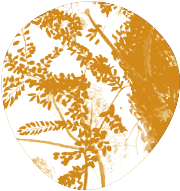

In Sand Talk, Yunkaporta exhorts us to “be like your place”.
At School most mornings, regardless of what is happening around and within us, songs of currawong, magpie and kookaburra loop, dip, and swell. Beneath Black Cockatoo’s flight path, the trees are steady. The low growing shrubs leaf new growth and what they shed becomes life for another. Beneath it all, is common ground.
According to Yunkaporta, in any dynamic, self-organising system, which includes our School, there is complexity. He identifies connectedness, diversity, interaction, and adaptation as key elements for health.
Social Tipping Points
As we face the crises of our times, unpredictability is predictable! What will ground us? What will be our common ground? We have examined a teaspoon of soil to find it teeming with life. We have dug up a clump of bush soil to find it moist and thick with roots and tiny organisms. Can we wriggle our toe-roots into the soil and soul of place and community? Can our very sense of who we are be shaped and vitalised by place? Can we enact locally what we want globally?
The ecological tipping points and the consequences are sobering. Can we imagine social tipping points as part of the restorying and restoration needed? Could the mycelium of connection, interaction, diversity, and adaptation as described by Yunkaporta, be a model for building social movements powered by friendship and respect, that transform the consumptive and exploitative patterns that drag us into mires of complicity and passivity?
We have explored Place as an influencer of Identity. The Blue Mountains is layered with stories as a place of gathering, a place of celebration and ceremony. It is a place where spiritual presences stir your own spirit, a place of beauty and where the gratitude it evokes, leads to conservation and care for place and community. We might from time to time fall out of connection, but we never really are if we can feel in and around us, the tree that invites us, the companion birds, the social critters that are out teachers in social reciprocity.
Connectedness: how do we look out for one another in difficult times, how do we come together in celebration around the life passages of our children, the seasons of nature, also in our worries and our grief?
Interaction: how do we as a community interact with each other, with other communities, and with the wider society and its rules, protocols, and belief systems? How complex it is to live in a society where there are many things that we are pulled into complicity with, that we would choose otherwise if we could find our way to.
Diversity; a healthy ecosystem including a community needs diversity. It is another sobering lesson of our time that we have massive declines in biodiversity and ongoing discrimination toward those identified as “other”. Each community needs to find its sustainability in managing the complexities of individuals and groupings; of tall tree and ferny villages, of sheltered places for nesting; and of the bees and birds who go between communities, bringing messages, refreshment, and challenges to our system from the wider one in which we are also embedded.
Adaptation: this is about the capacity to transform while remaining a “community”, our hearts cherishing common ground and open to difference and to discomfort. The swamp at Wentworth Falls Lake has been massively altered, transformed. Yet in this time, it keeps the waters sweet, clean, and healthy, for the critters and plants to which it is home and community, and for the families of swimmers.
The ever-generous sun warms my back as I write this. It reminds me that we are at our best when we strive to warm each other’s backs, and that we keep being generous even when ominous clouds are building.
Lynn